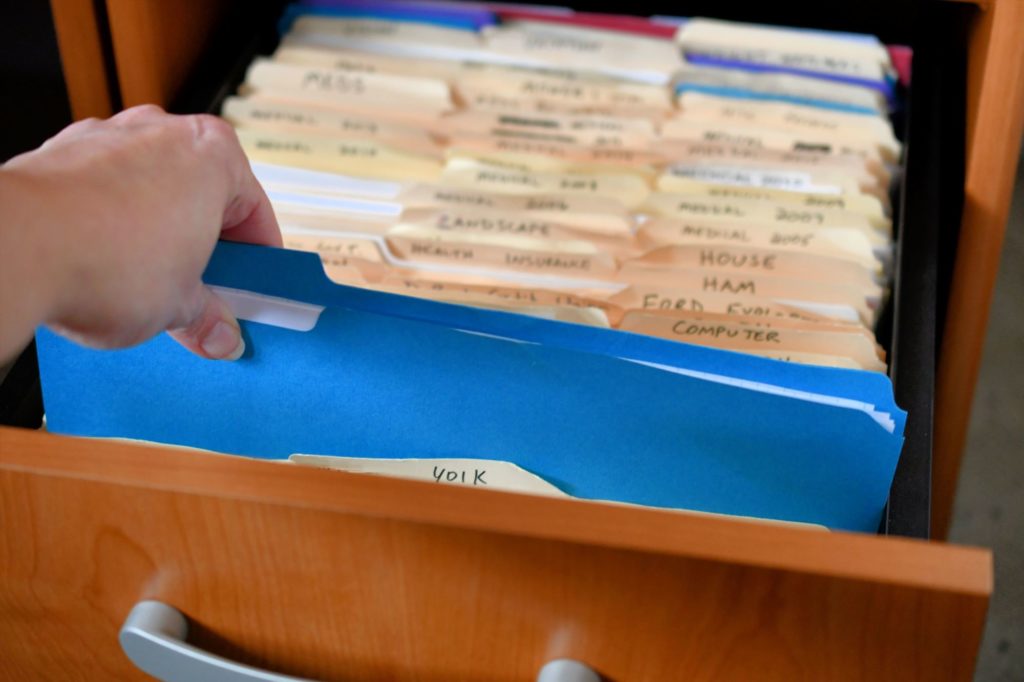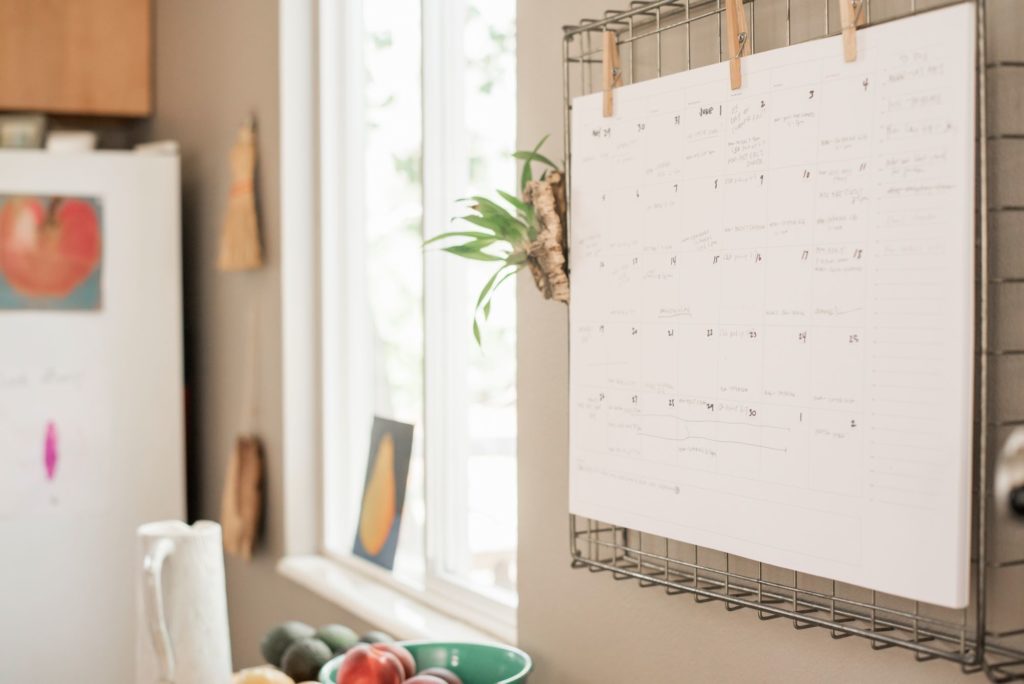If your kitchen counter, dining room table, or home office is drowning in paperwork and mail, you’re not alone. Many of us struggle to keep track of bills, important documents, and that never-ending stream of mail.
The good news is that getting organized doesn’t have to be an overwhelming task. With a few simple tips and finding a system that works, you can take control of the paper clutter while making sure you never lose track of important papers.
Step 1: Create an Easy Filing System
The first step to organizing paperwork is to have a clear, easy-to-use filing system. Here are a few ways to get started:
Sort into Categories
Start by sorting your papers into broad categories like bills, medical records, tax documents, and personal records. Use a filing cabinet or filing boxes to store each category. Labeling each folder clearly will help you find things quickly when you need them.
Use Color Coding
To make things even simpler, use colored folders or labels for each category. For example, use blue for bills, red for taxes, and green for medical documents. This will make your filing system more visual and easier to navigate.
Purge Regularly
Over time, paperwork can pile up, even in an organized system. Make it a habit to go through your files every six months to a year and shred anything you no longer need, like old receipts or outdated policies.

Step 2: Create a System for Incoming Mail
If your mailbox is constantly stuffed with bills, credit card offers, invitations, and advertisements, it’s time to implement a system for handling incoming mail.
Create a Mail Sorting Station
Set up a designated spot where you can sort through mail as soon as you bring it inside. Use a small basket, tray, or wall organizer to keep things tidy. Label slots or trays for “To Pay,” “To File,” and “To Recycle” to ensure nothing gets lost or forgotten.
Open Mail Immediately
Instead of letting mail pile up unopened, open it as soon as it arrives. Toss out junk mail right away and place important documents in their appropriate slots in your sorting station.
Set a Weekly Mail Day
Designate one day each week to go through the “To Pay” and “To File” trays. Pay any bills, file away necessary documents, and shred any sensitive papers that you don’t need to keep.
Step 3: Embrace Digital Solutions
While managing physical papers is important, there’s no denying that using digital tools can reduce the clutter and make organization even easier. Here are a few ways to integrate digital document management into your system:
Scan and Save
Invest in a small scanner or use a scanning app on your phone to digitize important papers like receipts, contracts, and medical records. Save them in labeled folders on your computer or secure cloud storage so you can access them from anywhere.
Go Paperless
Many services and utilities now offer paperless billing, which can reduce the amount of mail you receive. Opt for electronic statements when possible, and use online banking to manage your finances. Be sure to save copies of any important digital documents in a secure folder.
Use Document Management Software
For those with a lot of paperwork to manage, consider using a document management system like Google Drive, Dropbox, or iCloud Drive. These programs allow you to organize, search, and share documents easily.
Step 4: Set Up a Command Center
A home “command center” can be a lifesaver for keeping your documents, mail, and other essential items organized in one place. Here are a few things you could include:

Wall Calendar
Use a wall calendar or calendar whiteboard to track bill due dates, appointments, and important reminders. This will help you stay on top of deadlines and avoid late fees.
Bulletin Board
Pin up any important documents that need immediate attention, like appointment cards or school notices.
Tray System
Have separate trays for incoming mail, outgoing mail, and documents that need action, so nothing slips through the cracks.
Step 5: Stick to the System
The key to long-term success with document and mail organization is consistency. Once you’ve got your system set up to a point where it’s working well for you, stay consistent! Here are a few tips to keep it running smoothly.
Daily Maintenance
Take five minutes each day to go through mail, pay bills, and sort papers. Staying on top of things regularly will prevent clutter from building up again.
Set Reminders
If you tend to forget to file documents or pay bills on time, set reminders on your phone or computer.
Adjust as Needed
Your organizational needs may change over time, so don’t be afraid to adjust your system if something isn’t working.
By creating a paperwork organization system, you can reduce paper clutter and become more organized for the long-term. The key is to start simple and stay consistent! Once your system is in place, you might wonder how you ever lived without it.